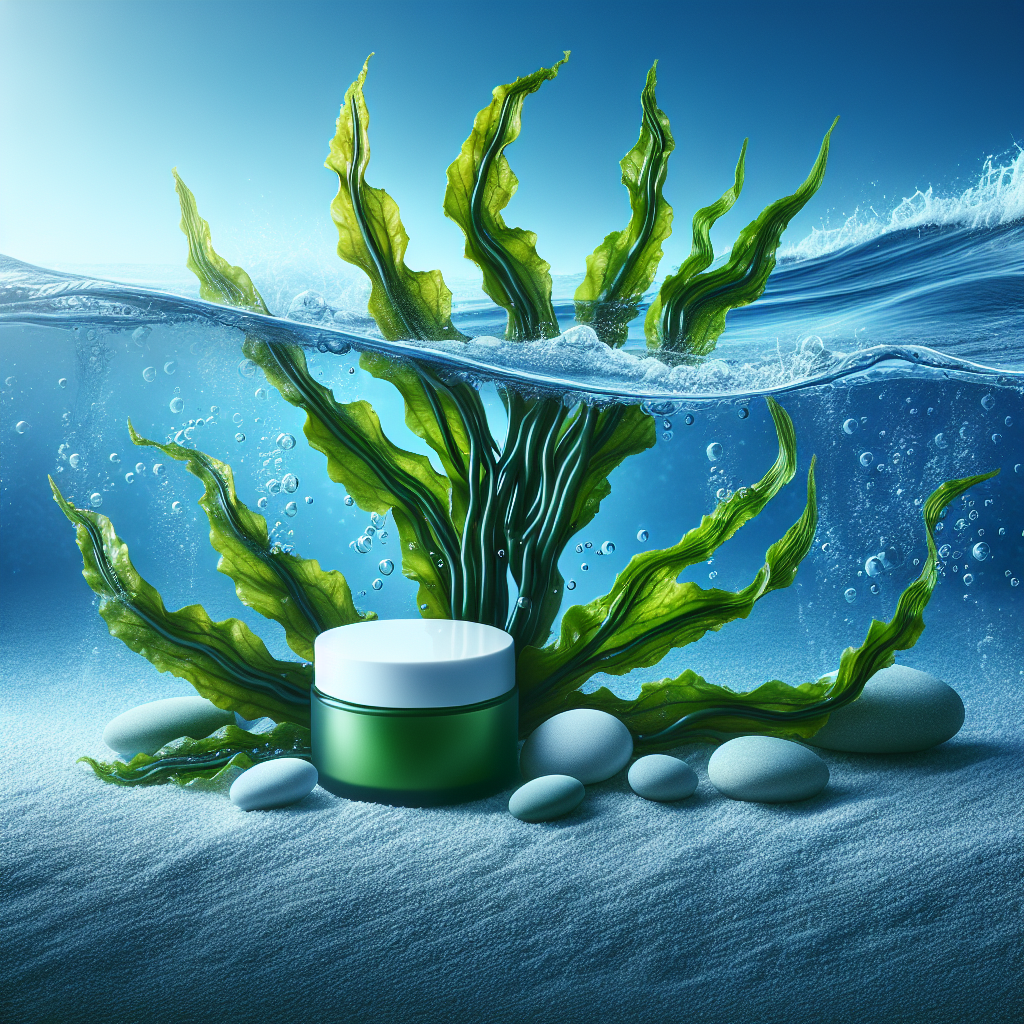If you’re looking for the best seaweed products to combat cellulite, you’ve come to the right place. Cellulite, a common concern for many, often prompts questions about its causes, treatment options, and potential remedies. In this article, we provide answers to frequently asked questions about cellulite and explore the effectiveness of seaweed products in reducing its appearance. From understanding the root causes of cellulite to exploring natural solutions and over-the-counter products, we’ll guide you through the journey of finding the best seaweed products and where to find them. So, let’s dive in and discover the wonders of seaweed in the fight against cellulite.
What is Cellulite?
Definition of cellulite
Cellulite is a common condition that affects the appearance of the skin, particularly in areas such as the thighs, buttocks, and abdomen. It is characterized by dimpled, uneven skin texture, often likened to the texture of orange peel or cottage cheese.
Appearance of cellulite on the skin
When you have cellulite, the skin may appear lumpy or have visible depressions, giving it an uneven and textured look. This is caused by underlying fat deposits pushing through connective tissue fibers, which creates the characteristic dimples and bumps associated with cellulite.
What Causes Cellulite?
Lifestyle factors contributing to cellulite
While cellulite can occur in individuals of all body types and sizes, certain lifestyle factors may contribute to its development. These factors include a sedentary lifestyle, poor nutrition, smoking, and excessive alcohol consumption. A lack of physical activity can lead to decreased muscle tone and blood circulation, which can contribute to the appearance of cellulite.
Genetic factors influencing cellulite
Genetics also play a role in the development of cellulite. Some individuals may be genetically predisposed to having a higher percentage of body fat or weaker connective tissue, making them more prone to cellulite. Hormonal factors, such as estrogen, can also influence the formation of cellulite.
Other factors that may cause cellulite
Other factors that may contribute to the development of cellulite include hormonal changes, such as puberty or pregnancy, and certain medical conditions, such as poor lymphatic drainage or circulatory disorders. Additionally, high levels of stress and the use of certain medications may also increase the risk of developing cellulite.

Is Cellulite Harmful?
Health risks associated with cellulite
Although cellulite can be aesthetically displeasing, it is generally considered a benign condition with no direct health risks. However, it is important to note that the presence of cellulite may be associated with underlying health issues such as poor blood circulation, lymphatic drainage problems, or excess body fat, which can have implications for overall health and well-being.
The cosmetic nature of cellulite
The primary concern for individuals with cellulite is often its impact on their appearance and self-confidence. Cellulite can make individuals feel self-conscious about wearing revealing clothing or participating in activities that expose the affected areas of their body. While cellulite may not pose a direct health risk, its presence can significantly impact an individual’s quality of life.
Can Diet and Exercise Reduce Cellulite?
The role of diet in managing cellulite
A healthy and balanced diet can play a role in managing cellulite by reducing overall body fat and supporting the health of the skin. Eating a diet rich in fruits, vegetables, lean proteins, and whole grains can help maintain a healthy weight and promote collagen production, which can improve the elasticity and appearance of the skin.
Effectiveness of exercise on cellulite
Regular exercise, especially activities that target the affected areas, can help reduce the appearance of cellulite. Strength training exercises that focus on building muscle in the thighs, buttocks, and abdomen can help firm and tone the skin, reducing the visibility of cellulite. Cardiovascular exercises, such as running or cycling, can also aid in overall weight loss and improve blood circulation, which may contribute to reducing cellulite.

Are Women More Prone to Cellulite Than Men?
Gender differences in cellulite prevalence
It is widely accepted that cellulite is more prevalent in women compared to men. This is primarily due to differences in the structure and distribution of fat cells, connective tissue, and hormonal factors. The vertical arrangement of fat cells in women’s skin, along with thinner and less dense connective tissue, can make the appearance of cellulite more noticeable.
Factors contributing to cellulite in women
In addition to the structural and hormonal factors, women’s higher percentage of body fat and the presence of estrogen can contribute to the development and visibility of cellulite. Hormonal changes during puberty, pregnancy, and menopause can also impact the appearance of cellulite in women.
Cellulite occurrence in men
While cellulite is less common in men, it can still occur. Men typically have a different pattern of fat distribution and thicker connective tissue, which may explain why cellulite is less visible in their skin. However, factors such as genetics, obesity, and hormonal imbalances can contribute to the development of cellulite in men as well.
How Can Cellulite Be Treated?
Home remedies for cellulite reduction
There are various home remedies and lifestyle changes that individuals can try to reduce the appearance of cellulite. These include dry brushing the affected areas to stimulate blood flow and lymphatic drainage, using caffeine-based scrubs or creams to temporarily tighten the skin, and incorporating massage techniques to improve circulation. Additionally, maintaining a healthy weight, quitting smoking, and staying hydrated can also contribute to minimizing the appearance of cellulite.
Medical procedures to treat cellulite
For individuals seeking more intensive treatment options, there are medical procedures available to address cellulite. These include:
- Laser therapy: This non-invasive treatment uses laser energy to break down fat deposits and stimulate collagen production, leading to smoother skin.
- Subcision: This procedure involves using a needle to cut the fibrous bands that pull down on the skin, releasing the dimples associated with cellulite.
- Radiofrequency treatments: These treatments deliver controlled heat to the deep layers of the skin, promoting collagen production and tightening the skin.
It is important to consult with a qualified medical professional to determine the most suitable treatment option based on individual needs and goals.

Does Losing Weight Eliminate Cellulite?
Misconceptions about weight loss and cellulite
While weight loss can contribute to reducing the appearance of cellulite, it is not a guaranteed solution. Cellulite is not solely caused by excess body fat, and individuals at a healthy weight can still have cellulite. Losing weight may result in a reduction of cellulite if there is a significant decrease in overall body fat, but it may not eliminate the condition entirely.
The impact of weight loss on cellulite
Weight loss can potentially improve the appearance of cellulite by reducing the amount of fat that pushes through the connective tissue. Additionally, a combination of weight loss and exercise can help tone and firm the skin, further minimizing the visibility of cellulite. However, individual results may vary, and it is important to have realistic expectations regarding the impact of weight loss on cellulite.
Are There Any Effective Home Remedies for Cellulite?
Popular DIY solutions for reducing cellulite
There are several popular home remedies that individuals have tried to reduce the appearance of cellulite. These include:
- Coffee scrubs: Mixing coffee grounds with coconut oil or olive oil to create a scrub that can stimulate blood circulation and temporarily tighten the skin.
- Dry brushing: Gently brushing the affected areas with a natural bristle brush to exfoliate the skin and promote lymphatic drainage.
- Apple cider vinegar: Applying diluted apple cider vinegar to the skin or incorporating it into a massage oil to potentially improve the appearance of cellulite.
While these remedies may provide temporary improvement or a placebo effect, scientific evidence supporting their long-term efficacy is limited.
Natural ingredients for home remedies
Certain natural ingredients may have properties that can potentially improve the appearance of cellulite. These include:
- Seaweed extract: Seaweed is rich in antioxidants and minerals, and some studies suggest that topical application or ingestion of seaweed products may have a positive impact on skin health and cellulite reduction.
- Gotu kola: This herb is believed to promote collagen production and increase blood circulation, potentially improving the appearance of cellulite.
- Ginkgo biloba: Known for its antioxidant properties and ability to improve blood flow, ginkgo biloba may contribute to reducing the visibility of cellulite.
It is important to note that natural remedies may not work for everyone, and individual results may vary. It is always advisable to consult with a healthcare professional before trying any new remedies or supplements.
Can Creams and Lotions Really Reduce Cellulite?
Efficacy of topical treatments for cellulite
There is a wide range of creams and lotions marketed as cellulite-reducing products. While some may temporarily improve the appearance of cellulite through hydrating the skin or providing a tightening effect, their long-term efficacy is questionable. The active ingredients in these products, such as caffeine, retinol, or peptides, may have some effect on blood circulation or collagen production, but scientific evidence supporting their ability to permanently reduce cellulite is limited.
Common active ingredients in cellulite creams
Cellulite creams often contain ingredients that claim to target cellulite by improving blood flow, reducing inflammation, or increasing collagen production. Some common active ingredients found in cellulite creams include:
- Caffeine: Known for its potential to improve blood flow and temporarily tighten the skin.
- Retinol: A form of vitamin A that may stimulate collagen production and promote skin cell turnover.
- Peptides: Short chains of amino acids that may support collagen production and improve the texture of the skin.
While these ingredients may provide some temporary improvement in the appearance of cellulite, their long-term efficacy is still a subject of debate. It is essential to manage expectations and consult with a healthcare professional before investing in cellulite creams or lotions.
Is Cellulite More Common as You Age?
Relationship between aging and cellulite
Cellulite becomes more common as individuals age due to several factors. As we age, the skin loses elasticity and becomes thinner, making cellulite more visible. The production of collagen, which helps to maintain the skin’s firmness and structure, also decreases with age. Additionally, hormonal changes during menopause can contribute to an increase in cellulite.
Prevalence and severity of cellulite with age
While cellulite can affect individuals of all ages, it is generally more prevalent and severe in older individuals. Factors such as hormonal changes, decreased muscle mass, and lifestyle habits accumulated over time can contribute to the worsening of cellulite with age. However, it is important to note that not all individuals will experience a significant increase in cellulite as they age, and the severity can vary based on individual factors.
In conclusion, cellulite is a common condition that affects the appearance of the skin, predominantly in women. It is influenced by a combination of genetic, lifestyle, hormonal, and aging factors. While cellulite is not considered harmful from a health perspective, it can have a significant impact on an individual’s self-confidence and quality of life. Various approaches, including lifestyle changes, medical procedures, home remedies, and topical treatments, can be utilized to manage and potentially reduce the appearance of cellulite. However, it is important to have realistic expectations and consult with healthcare professionals to determine the most suitable options based on individual needs.

